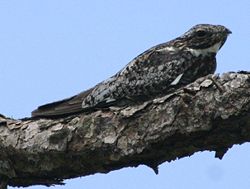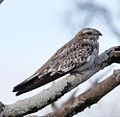| Chordeiles | |
|---|---|
 | |
| Common nighthawk (Chordeiles minor) | |
| Scientific classification | |
| Kingdom: | Animalia |
| Phylum: | Chordata |
| Class: | Aves |
| Clade: | Strisores |
| Order: | Caprimulgiformes |
| Family: | Caprimulgidae |
| Genus: | Chordeiles Swainson, 1832 |
| Type species | |
| Caprimulgus virginianus Gmelin, JF, 1789=Camprimulgus minor Forster, JR, 1771 | |
| Synonyms | |
Podager | |
Chordeiles is a New World genus of nighthawks in the nightjar family Caprimulgidae.












